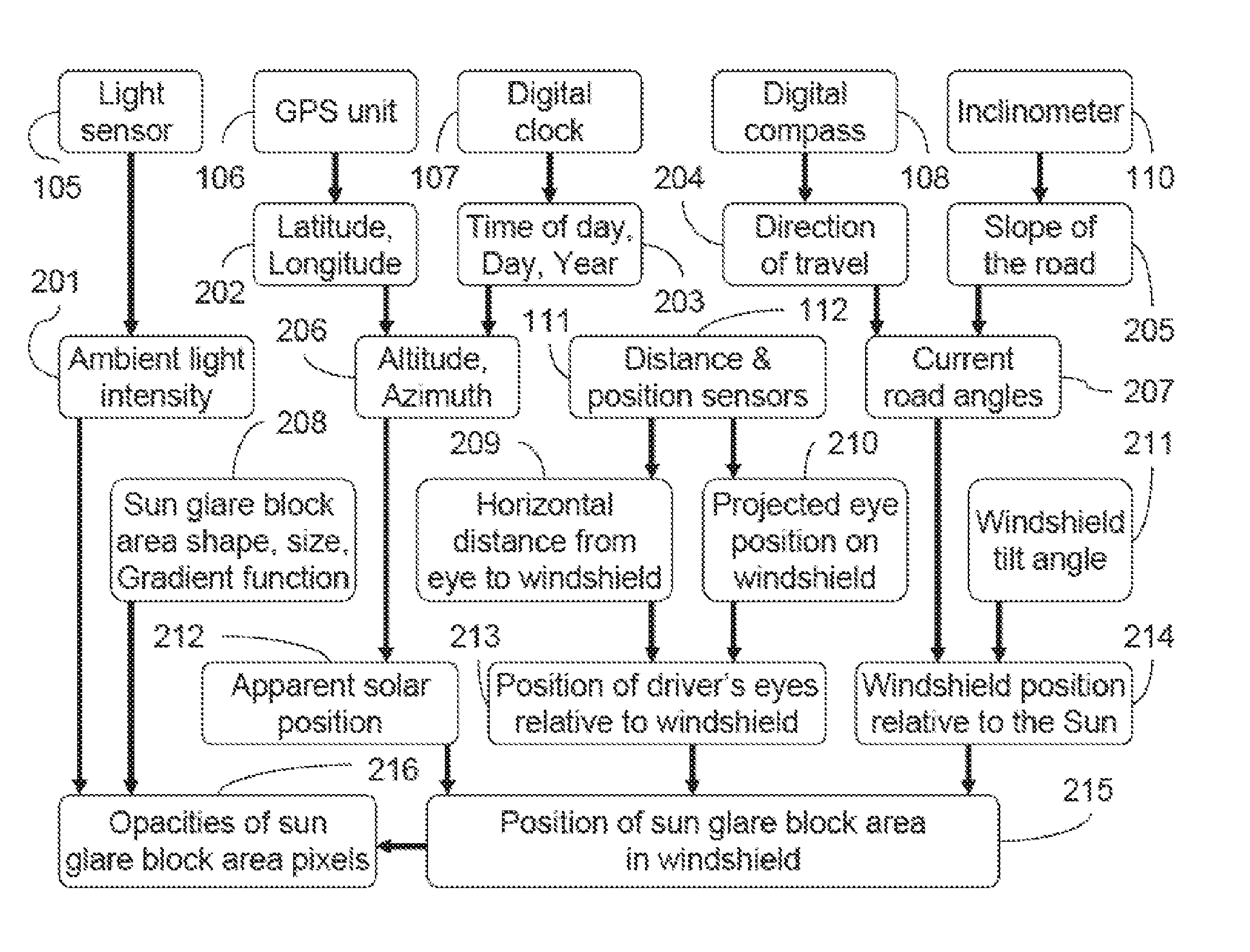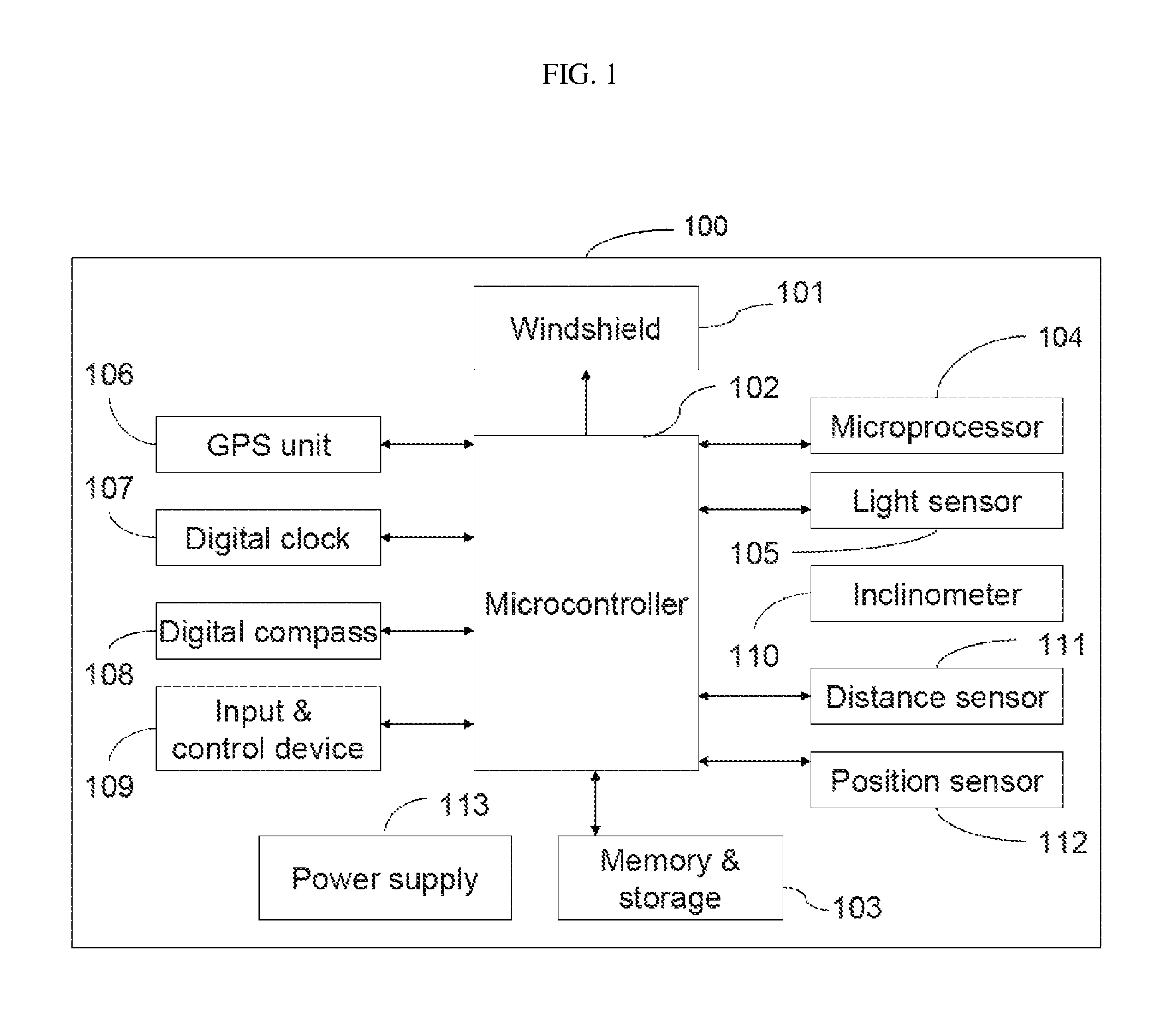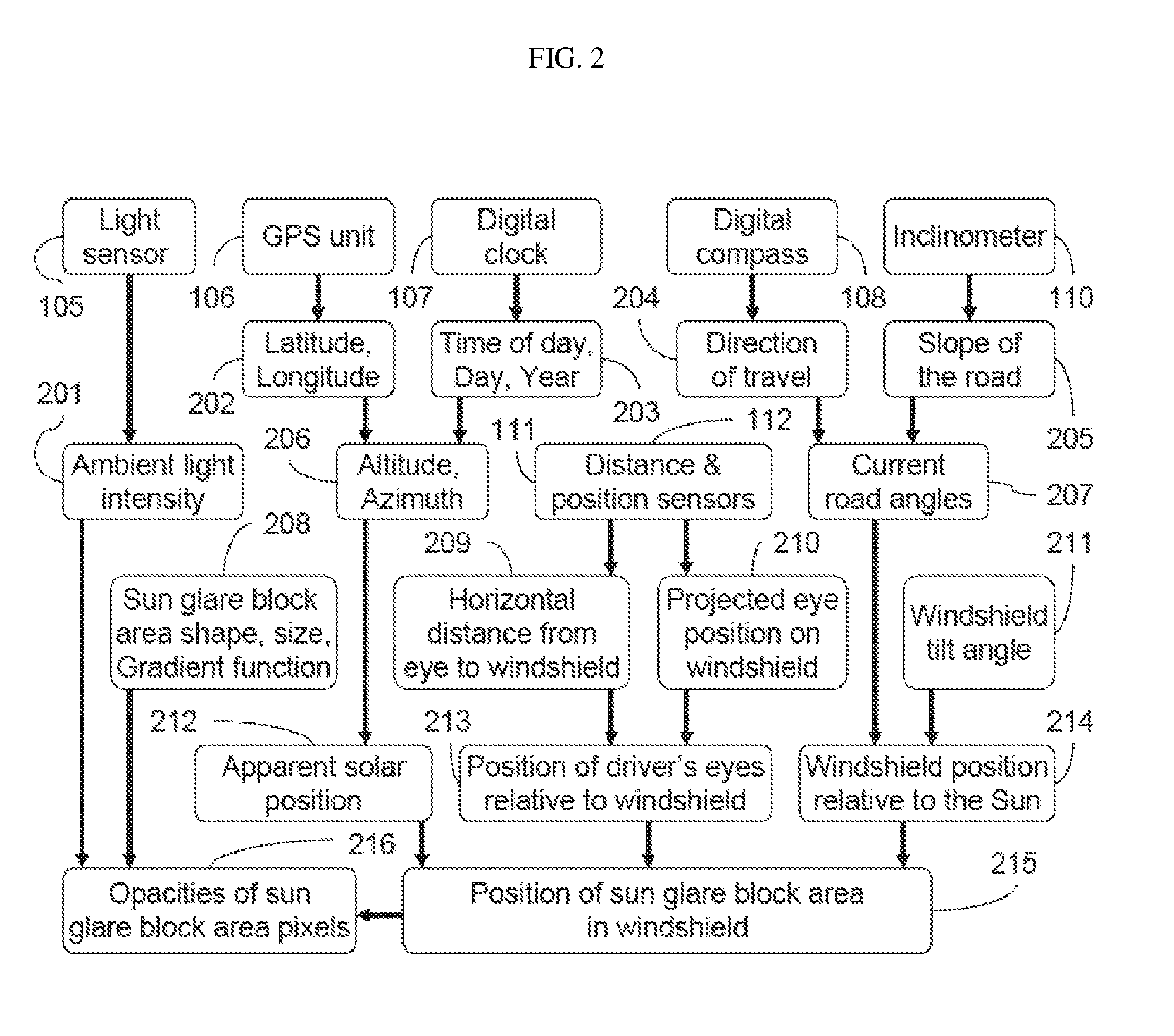System and methods for an automated sun glare block area and sunshield in a vehicular windshield
a technology of automatic sun glare block and vehicle windshield, which is applied in the direction of roofs, process and machine control, instruments, etc., can solve the problems of causing highway havoc, reducing the visibility of vehicles, so as to reduce the minimum area, clear and unobstructed the effect of the road, and reducing the visibility
- Summary
- Abstract
- Description
- Claims
- Application Information
AI Technical Summary
Benefits of technology
Problems solved by technology
Method used
Image
Examples
Embodiment Construction
[0045]The invention is described hereinafter in detail with reference to the accompanying drawings, which forms a part of this specification. This detailed description focuses on an innovative method to accurately calculate the precise position and opacities of the sun glare block area and a first-of-its-kind system to display it in the windshield of a motor vehicle.
[0046]As stated in the background on the calculation of the sun glare position on the windshield, prior arts do not disclose or provide a detailed description on how to obtain the precise position of the sun glare on the windshield. Some prior arts provide only a conceptual approach on the estimation or approximation of the sun glare position on the windshield assuming a fixed position of the driver's eyes. Whenever the driver has a small movement of his or her head during driving, the sun glare block area will cover only part of the sun glare for the driver's eyes. In this invention, an accurate calculation of the preci...
PUM
 Login to View More
Login to View More Abstract
Description
Claims
Application Information
 Login to View More
Login to View More - R&D
- Intellectual Property
- Life Sciences
- Materials
- Tech Scout
- Unparalleled Data Quality
- Higher Quality Content
- 60% Fewer Hallucinations
Browse by: Latest US Patents, China's latest patents, Technical Efficacy Thesaurus, Application Domain, Technology Topic, Popular Technical Reports.
© 2025 PatSnap. All rights reserved.Legal|Privacy policy|Modern Slavery Act Transparency Statement|Sitemap|About US| Contact US: help@patsnap.com



